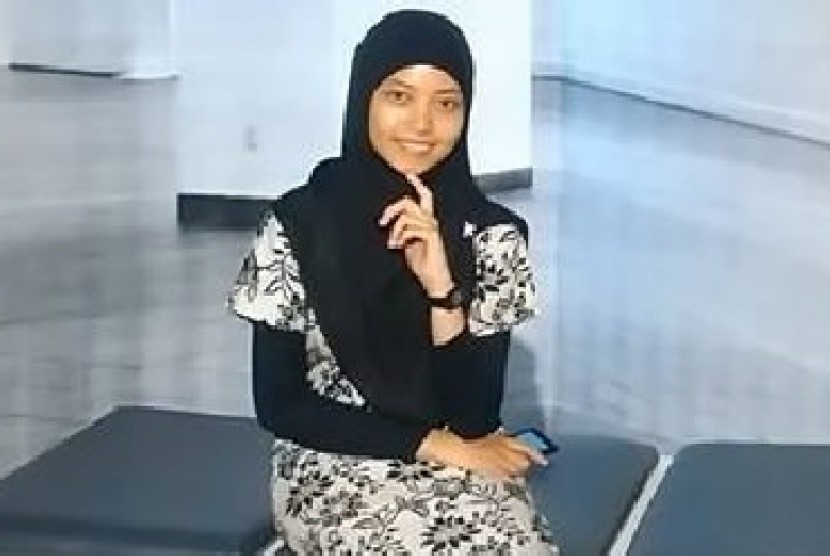REPUBLIKA.CO.ID, By Shelbi Asrianti/shelbi.aja@gmail.com*
Six kids cheering happily. They seemed excited when riding jukung, a typical boat of Indonesia.
Those sprats were actually some silent statues. Three-dimensional work entitled "Art-Chipelago Let's Go", made of stoneware ceramic and wood.
However, their expressions reflect the enthusiasm to sailing through the sea. The Jakarta artist, who made it, Evy Yonathan, illustrates the archipelago with the artwork.
"Art-Chipelago" is the theme of the biennial event held in Building A, B, and C of the National Gallery of Indonesia, which took place on 26 May to 7 June 2015. The art exhibition was trying to spread the archipelago concept that imagined by the artists.
Head of the Indonesian National Gallery, Tubagus 'Andre' Sukmana says, Indonesia is a huge archipelago state. Nusantara, the other term of this country, consists of "nusa" (island) and "antara" (between).
The islands connected by ocean, which covers the territory of The Unitary State of the Republic of Indonesia (NKRI). The using of "Art-Chipelago" theme is starting from the concept.
"It is the acronym of the 'art' and 'archipelago', intended as art practices in the archipelago state," he said.
106 artists from 23 provinces in Indonesia, plus Malaysia and Philippines, present a range of works related to the theme. Some 97 of them go after the selection, while nine people were invitees.
Diversity appears from various media, techniques, and expression of the artworks. The participants were exhibiting paintings, sculptures, graphics, images, photographs, installations, and video arts. All of them go through the process of curation by Asikin Hasan, Sudjud Dartanto, and Suwarno Wisetrotomo.
Exhibition curator, Sudjud Dartanto, explained that the various artworks in the "Art-Chipelago" delivered a variety of cultural experiences and psychoanalytic. In addition, the works that have passed curation is expected to expand the imagination uninterrupted territorial boundaries. "Art can encourage the creation of new simulacrum in the accompanying archipelago existing reality," said Sudjud.
The artists are free to express their interpretation to the major theme. They could display a geophysical island nation, culture, natural resources, community life, social and political criticism, the mystical side, life signification, and so on.
Mintosari, artists from East Kalimantan, called to describe the wealth of Indonesian fauna. He described hornbill through the medium of acrylic on canvas.
Similarly, Camelia Mitasari Hasibuan of Yogyakarta. Through the works of oil on canvas titled "Indonesia Punya, Indonesia Kaya,” she presents tigers, turtles, lemurs, birds, coral reefs, masks, and puppets.
While, Deddy Junizar of Riau Islands depicts five adults were busy playing traditional game named gasing. Work entitled "Budaya Gasing" was painted with oil paint on canvas.
"Gasing originally derived from Natuna and spread to Anambas. When the northern season comes, the wind was strong; all the residents there will stop fishing and go play gasing. Slowly, that game was developed into the cultural tradition," he says.
Another cultural treasure is "Pasola" by Ferry Wabang of East Nusa Tenggara. Pasola is a custom culture of welcoming the New Year and harvest time in the Sumba, East Nusa Tenggara. Those societies, who still adhere to the merapu belief, combine the horseback riding and javelin throwing expertise.
Suwarno Wisetrotomo, another curator of the exhibition, also highlights the technical range of realist painting. The works were mostly perpetuating social conditions that can be found every day.
"Like the 'Tukang Sampah Pasar' painting by Muhammad Andik. He brings the reality of the community, a slum, but it caught up beautifully," he stated.
The art of video work, carried out by Farhanaz Rupaidha. He broadcasts five-minutes video entitled "24 Grid Living in Harmony of Dust and Heat" of the strong opposition to the steel mills.
That biennial agenda were performing the artworks from across generation. About 527 applications compete and selected by the curators.
* Journalist of Republika/shelbiasrianti.blogspot.com


